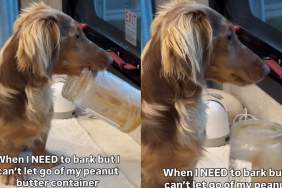The short answer is yes, dogs can eat peanuts, but there are some big exceptions and things you should know before you feed them to your dog.
Peanuts are high in beneficial, healthy nutrients for your dog, but they should only be eaten in moderation, and only unsalted, unflavored nuts with the shells removed are safe to eat at all.
As always, you must ask your veterinarian before sharing human foods with your dog, including peanuts. Too many peanuts can result in gastrointestinal upset in the short term and pancreatitis in the long term. Also, some dogs may not chew peanuts properly, which can cause intestinal obstruction.
How are peanuts good for dogs?
Peanuts are full of valuable vitamins and nutrients. They’re high in vitamins B6 and E, niacin, protein, and healthy fats. These are things most dogs crave, so your dog will probably find these nuts to be a tasty treat. So long as the nuts are dry roasted or raw, free of salt and flavoring, and removed from their shells, they’re usually safe to eat and make for a healthy snack.
If you want to feed your dog peanuts or peanut-based products like peanut butter, you must make sure they are prepared properly and are safe for your dog to eat. If served correctly, they can make for a healthy, sometimes-treat for dogs.
When are peanuts bad for dogs?
There are several ways peanuts can be dangerous for dogs. The shells are difficult to digest and can cause intestinal blockage or be a choking hazard, and the nuts themselves can be hard to chew.
Peanuts are high in fat, which can be good in appropriate amounts. However, too much fat can lead to an upset stomach, and over a longer period, it can cause pancreatitis. You should only give peanuts to your dog sometimes and in moderation.
Salted peanuts are too high in sodium for dogs, and flavored peanuts can contain artificial chemicals and other products that aren’t meant to be consumed by canines. Too much sodium can lead to salt poisoning.. If your dog snags one or two salted peanuts that have fallen on the floor, it shouldn’t be that big of a problem. Too many, however, can cause serious medical issues.
It is important to note that peanuts are a common allergen, even among dogs. Some dogs can develop an allergy that can range from mild to severe. In some cases, dogs can suffer from anaphylaxis, a potentially life-threatening allergic reaction.
If you see the signs of an allergic reaction in your dog, such as coughing, sneezing, hives, swelling, difficulty breathing, or other symptoms, contact your vet right away.
How should you feed peanuts to your dog?
Boiled, roasted, or raw peanuts usually make for a safe treat as long as you remove the shell and make sure they don’t contain salt or flavoring. Make sure your dog is chewing them fully so they don’t cause intestinal blockage.
One way to avoid gastrointestinal blockage is to grind peanuts up or serve them in the form of peanut butter. Be careful when choosing a peanut butter for your dog, as some brands contain xylitol, an artificial sweetener that is toxic for dogs. Xylitol also appears in many candies, sweets, and desserts. You may wish to make your own peanut butter to be safe, but always check food labels for any ingredients that you are unfamiliar with.
Always check with your veterinarian before giving your dog peanuts or any other human food. They can advise you on whether your dog can safely eat them and how much you should give your pup in a serving.









